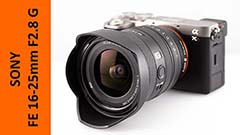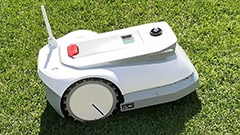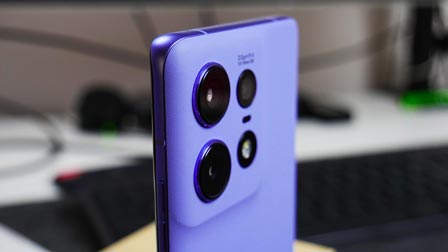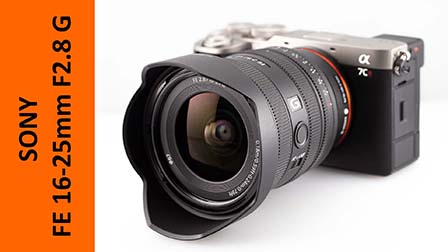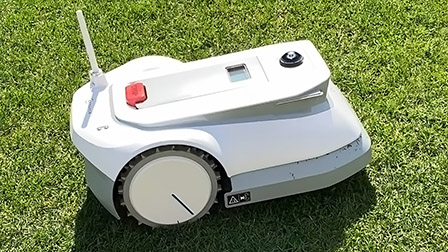|
|||||||
|
|
|
 |
|
|
Strumenti |
|
|
#141 | |
|
Senior Member
Iscritto dal: Oct 2000
Città: UK
Messaggi: 7408
|
Quote:
__________________
"Questo forum non è un fottuto cellulare quindi scrivi in italiano, grazie." (by Hire) Le mie foto su Panoramio - Google Earth |
|
|
|

|
|
|
#142 | |
|
Senior Member
Iscritto dal: Nov 2001
Città: Padova
Messaggi: 1635
|
Quote:
__________________
Cosmos Pure | Core i7 860 | P7P55D-E Deluxe | 16GB DDR3 Vengeance | HD5850 | 2x850PRO 256GB | 2xRE3 250GB | 2xSpinPoint F3 1TB |
|
|
|

|
|
|
#143 |
|
Senior Member
Iscritto dal: Nov 2001
Città: Padova
Messaggi: 1635
|
BREAKING NEWS: Object Bigger than Pluto Discovered, Called 10th Planet
By Robert Roy Britt Senior Science Writer posted: 29 July 2005 07:59 pm ET Updated at 11:17 p.m. ET : Astronomers have discovered an object in our solar system that is larger than Pluto. They are calling it the 10th planet, but already that claim is contested. The new world's size is not at issue. But the very definition of planethood is. It is the first time an object so big has been found in our solar system since the discovery of Pluto 75 years ago. The announcement, made today by Mike Brown of Caltech, came just hours after another newfound object, one slightly smaller than Pluto, was revealed in a very confusing day for astronomers and the media. The new object, temporarily named 2003 UB313, is about three times as far from the Sun as is Pluto. "It's definitely bigger than Pluto," said Brown, a professor of planetary astronomy. The object is round and could be up to twice as large as Pluto, Brown told reporters in a hastily called NASA-run teleconference Friday evening. His best estimate is that it is 2,100 miles wide, about 1-1/2 times the diameter of Pluto. One of many? The object is inclined by a whopping 45 degrees to the main plane of the solar system, where most of the other planets orbit. That's why it eluded discovery: nobody was looking there until now, Brown said. Some astronomers view it as a Kuiper Belt object and not a planet. The Kuiper Belt is a region of frozen objects beyond Neptune. Pluto is called a Kuiper Belt object by many astronomers. Brown himself has argued in the past for Pluto's demotion from planet status, because of its diminutive size and eccentric and inclined orbit. But today he struck a different note. "Pluto has been a planet for so long that the world is comfortable with that," Brown said in the teleconference. "It seems to me a logical extension that anything bigger than Pluto and farther out is a planet." Offering additional justification, Brown said 2003 UB313 appears to be surfaced with methane ice, as is Pluto. That's not the case with other large Kuiper Belt objects, however. "This object is in a class very much like Pluto," he said. NASA effectively endorsed the idea in an official statement that referred to 2003 UB313 as the 10th planet. Yet in recent years, a bevy of objects roughly half to three-fourths the size of Pluto have been found. No definition for 'planet' Brian Marsden, who runs the Minor Planet Center where data on objects like this are collected, says that if Pluto is a planet, then other round objects nearly as large as Pluto ought to be called planets. On that logic, 2003 UB313 would perhaps be a planet, but it would have to get in line behind a handful of others that were discovered previously. "I would not call it the 10th planet," Marsden told SPACE.com. Alan Boss, a planet-formation theorist at the Carnegie Institution of Washington, called the discovery "a major step." But Boss would not call it a planet at all. Instead, he said Pluto and other small objects beyond Neptune should be called, at best, "Kuiper Belt planets." "To just call them planets does an injustice to the big guys in the solar system," Boss said in a telephone interview. The very definition of what constitutes a planet is currently being debated by Boss and others in a working group of the International Astronomical Union. Boss said the group has not reached consensus after six months of discussion. The debate actually stretches back more than five years and is rooted in the fact that astronomers have never had a definition for the word "planet," because the nine we knew seemed obvious. "This discovery will likely re-ignite a healthy debate about what is and what is not a planet," Boss said. Next up: Mars-sized objects? Alan Stern, of the Southwest Research Institute and leader of NASA's New Horizons mission to Pluto, predicted in the early 1990s that there would be 1,000 Plutos out there. He has also contended, based on computer modeling, that there should be Mars-sized worlds hidden in the far corners of our solar system and even possibly other worlds as large as Earth. In a telephone interview after Friday's announcement, Stern, who was not involved in the discovery, said he stands by those predictions and expects Mars-sized objects to be found within decades. "I find this to be very satisfying," Stern said of 2003 UB313. "It's something we've been looking for for a long time." Stern stopped short of calling it one of the greatest discoveries in astronomy, however, because he sees it as just one more of many findings of objects in this size range. Last year, for example, Brown's team found Sedna, which is about three-fourths as large as Pluto. Others include 2004 DW and Quaoar. Stern sees the outer solar system as an attic full of undiscovered objects. "Now we have the technology to see them," he said. "We're just barely scratching the surface." Way out there The new world is about 97 astronomical units from the Sun. An astronomical unit is the distance between the Sun and Earth. It becomes the farthest-known object in the solar system, and the third brightest of the Kuiper belt objects. It is colder than Pluto and "not a very pleasant place to be." It was found using the Samuel Oschin Telescope at Palomar Observatory. Backyard astronomers with large telescopes, some experience and a map may be able to spot 2003 UB313. Brown said it will be a very exciting object to explore since professionals and amateurs both have access to it. "It will be visible over the next six months and is currently almost directly overhead in the early-morning eastern sky, in the constellation Cetus," says Brown, who made the discovery with colleagues Chad Trujillo, of the Gemini Observatory, and David Rabinowitz, of Yale University, on Jan. 8. The team had hoped to analyze the data further before announcing the planet but were forced to do so Friday evening because word had leaked out, Brown said. "Somebody hacked our website," he said, and "they were planning to make [the data] public." Brown and Trujillo first photographed the new planet with the 48-inch Samuel Oschin Telescope on Oct. 31, 2003. However, the object was so far away that its motion was not detected until they reanalyzed the data in January of this year. In the last seven months, the scientists have been studying the planet to better estimate its size and its motions. Estimating size Scientists infer the size of a solar-system object by its brightness and distance. The reflectiveness of the new planet is not known, however, which is why the estimate of its diameter ranges from one to two times the size of Pluto. But those constraints are well supported by the data, Brown said. "Even if it reflected 100 percent of the light reaching it, it would still be as big as Pluto," says Brown. "I'd say it's probably one and a half times the size of Pluto, but we're not sure yet of the final size. But we are 100 percent confident that this is the first object bigger than Pluto ever found in the outer solar system." The upper size limit is constrained by results from the Spitzer Space Telescope, which records heat in the form of infrared light. Because the Spitzer can't detect the new planet, the overall diameter must be less twice Pluto's size, Brown said. Brown has had a running bet for five years with a friend that an object larger than Pluto would be found by Jan. 1 this year. 2003 UB313 was spotted on Jan. 8. "My first reaction was, 'aw, I lost the bet by seven days,'" he said. Brown's team has submitted a name proposal to the International Astronomical Union and has chosen not to divulge it until that body makes a decision. - BREAKING NEWS Tenth planet found! A team of astronomers systematically scanning the far reaches of the solar system has discovered a distant, icy world that is bigger than Pluto but so far away the head of a pin held at arm's length would blot out the sun. The discovery, if confirmed, would force astronomers to re-write their textbooks and give school kids a 10th planet to memorize once a governing body sanctions the still-secret name proposed by a trio of discoverers.  This artist's concept shows the planet catalogued as 2003UB313 at the lonely outer fringes of our solar system. Our Sun can be seen in the distance. The new planet, which is yet to be formally named, is at least as big as Pluto and about three times farther away from the Sun than Pluto. It is very cold and dark. The planet was discovered by the Samuel Oschin Telescope at the Palomar Observatory near San Diego, Calif., on Jan. 8, 2005. Credit: NASA/JPL-Caltech Currently known by the catalog number 2003UB313, the newly discovered planet wheels about in an elliptical orbit tilted some 45 degrees to the plane of the solar system's eight major planets, taking 560 years to complete one trip around the sun. At its most distant, the planet is a remote 97 times farther from the sun than the Earth. At its closest, it passes inside the orbit of Pluto at a distance of some 36 astronomical units. It is currently the most distant object known in the solar system, so far removed that its surface temperature is a frigid 30 degrees above absolute zero. "It has a surface just like that of Pluto," said Michael Brown, a planetary scientist at the California Institute of Technology. "It's a little bit bigger than Pluto and the main difference, of course, is it's much, much farther away than Pluto right now, so it's going to be a much colder place to be. Not a very pleasant place to live, definitely. And life as we know it would certainly not be doing much out there." The new world was discovered Jan. 8 by Brown, Chad Trujillo, of the Gemini Observatory in Mauna Kea, Hawaii, and David Rabinowitz, of Yale University, using the 48-inch Samuel Oschin Telescope at Mount Palomar. With a surface dominated by methane, the distant world is 1,677 miles in diameter, compared to about 1,400 miles for Pluto. It is a member of the Kuiper Belt, a broad fan-shaped disk of icy debris extending from the orbit of Neptune to well beyond Pluto. Disturbed by gravitational interactions, primarily involving Jupiter and Saturn, a Kuiper Belt object can fall into the inner solar system and become captured in a so-called short-period orbit. In the early solar system, gravitational encounters also threw large numbers of comets into a vast, spherical shell known as the Oort Cloud. Comets that eventually fall back into the inner solar system from the Oort Cloud typically have orbits measured in millions of years. The newly discovered world is a "very cold, very distant place," Brown told reporters in a teleconference Friday evening. "If you were standing on the surface and you held a pin at arm's length, you could cover the sun with the head of the pin. As I said, it's not a place you'd want to go for a summer vacation. Now, in 280 years, it'll be a lot closer, but it still won't be much of a vacation spot then, either."  This time-lapse image of a newfound planet in our solar system, called 2003UB313, was taken on Oct. 21, 2003, using the Samuel Oschin Telescope at the Palomar Observatory near San Diego, Calif. The planet, circled in red, is seen moving across a field of stars. The three images were taken about 90 minutes apart. Scientists did not discover the planet until Jan. 8, 2005. Credit: Samuel Oschin Telescope, Palomar Observatory The size of the planet was inferred by observations of its brightness. "Even if it reflected 100 percent of the light reaching it, it would still be as big as Pluto," Brown said in an earlier statement. "I'd say it's probably one and a half times the size of Pluto, but we're not sure yet of the final size." Talking to reporters, he said a name has been submitted to the International Astronomical Union and "I don't want to say what it is yet because we really want this name to get accepted and we want to make sure we go through all the proper channels," Brown said. The discovery almost surely will re-ignite the debate over what it takes to be defined as a planet. Many astronomers believe Pluto is more accurately grouped with other Kuiper Belt objects and should not be considered a planet in the traditional sense. The debate has even made it into the lyrics of popular song, "Planet X" by Christine Lavin (http://www.christinelavin.com/planetx.html). "Even I have promoted the idea that we should consider Pluto not to be a planet and a Kuiper Belt object instead," Brown said. "But historically, it's been called a planet for such a long time that I think we're never going to not call Pluto a planet. And that's fine. I think historically, we can call it a planet." But if Pluto is, in fact, a planet, "then anything larger than Pluto - I think we should draw the line there - anything larger than Pluto is a planet. Things that are smaller, I think we just call them typical members of the Kuiper Belt and they don't join this very special class of things that are planets." Brown said the discoverers were holding off making an announcement until after they completed their observations. But hackers found the discovery on a private website and trio decided to go public.
__________________
Cosmos Pure | Core i7 860 | P7P55D-E Deluxe | 16GB DDR3 Vengeance | HD5850 | 2x850PRO 256GB | 2xRE3 250GB | 2xSpinPoint F3 1TB |
|
|

|
|
|
#144 |
|
Senior Member
Iscritto dal: Feb 2002
Città: Trento
Messaggi: 961
|
__________________
"Et Eärallo Endorenna utúlien. Sinome maruvan ar Hildinyar tenn' Ambar-metta!" -- Aragorn Elessar, Heir of Isildur Mixmar -- OpenSuSE 11.1 on AMD 64 3000+ on DFI LanParty nF4-D | GeForce 6600 GT + Thermaltake Schooner on Samsung 710N Storage -- ( 2 x Hitachi Deskstar 80 Gb + 1 x Hitachi 250 Gb ) = 1 RAID 5 + 1 Storage space LaCie Ethernet Disk Mini 250 Gb | HP - DV2150 EL MILAN CLAN |
|
|

|
|
|
#145 |
|
Senior Member
Iscritto dal: Nov 2001
Città: Padova
Messaggi: 1635
|
Probe whips past Earth on long voyage to Mercury
BY STEPHEN CLARK SPACEFLIGHT NOW Posted: August 2, 2005 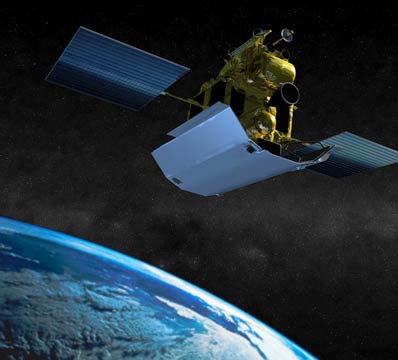 Artist's impression of MESSENGER. Credit: NASA/Johns Hopkins University Applied Physics Laboratory/Carnegie Institution of Washington Earth's first extended visit to the planet Mercury is now one step closer to success after the MESSENGER probe celebrated its birthday one day early on Tuesday with a speedy flyby of its home planet to tweak its course for arrival in orbit in 2011. MESSENGER made its closest approach to terra firma at 1913 GMT (3:13 p.m. EDT) as it flew 1,458 miles over central Mongolia near the capital of Ulaanbaatar. In an effort to reduce the amount of propellant MESSENGER had to carry during its launch, engineers designed the mission to include a series of six gravity assist maneuvers past Earth, Venus, and Mercury. These flybys can utilize the force of gravity to alter the future trajectory of the spacecraft, allowing it to swing from planet to planet before eventually entering orbit around Mercury. "One flyby down, five more to go," said Mark Holdridge, mission operations manager for MESSENGER at the Johns Hopkins University's Applied Physics Laboratory. "Now the mission begins." MESSENGER -- or the Mercury Surface, Space Environment, Geochemistry, and Ranging mission -- was launched one year ago Wednesday aboard a beefed-up Delta 2 Heavy booster from Cape Canaveral. The August 3 launch last year deployed the 2,400-pound craft into a path similar to Earth's orbit around the Sun. The probe approached Earth over the past few months as ground controllers commanded hydrazine-fueled thrusters to fire in several burns to precisely target MESSENGER for its close encounter. As both the planet and the spacecraft once again arrived near the same spot, Earth's gravity was used to kick MESSENGER into a different orbit to intercept Venus late next year. "This Earth flyby is the first of a number of critical mission milestones during MESSENGER's circuitous journey toward Mercury orbit insertion," said mission principal investigator Sean Solomon from the Carnegie Institute.  MESSENGER snapped this view of Earth on July 30 as the spacecraft approached its home planet for a gravity-assist flyby. The Narrow Angle Camera in MESSENGER's Mercury Dual Imaging System took the image, showing clear morning skies over Australia, when the spacecraft was about 655,570 miles from Earth. Credit: NASA/Johns Hopkins University Applied Physics Laboratory/Carnegie Institution of Washington/Northwestern University The mission's complex suite of science instruments was switched on as it neared Earth to conduct calibrations and test observations to help gauge the operability of the payload before arriving at Mercury. Optical cameras captured images of the Earth and the Moon beginning several days before the flyby, and color pictures were taken throughout Tuesday to be combined into a time lapse movie. "Not only did it help the spacecraft sharpen its aim toward our next maneuver, it presented a special opportunity to calibrate several of our science instruments," Solomon added. The probe's atmospheric and surface spectrometers made observations of the Moon, while the energetic particle and plasma spectrometer instrument studied Earth's magnetosphere starting about six hours prior to closest approach. Over the coming weeks, scientists will continue other measurements by MESSENGER's magnetometer, and solar wind observations are planned for this weekend. Spectral data from Earth's hydrogen corona will also be gathered. Plans then call for a likely engine burn known as a deep space maneuver in mid-December to accurately set up for the Venus encounter in a little over fourteen months. NASA says the craft has traveled 930 million miles over the past year on the first leg of a 7.9 billion mile voyage leading to a final arrival at Mercury in March of 2011. In its series of fleeting planetary visits, MESSENGER will gradually increase its orbital speed around Sun by over eleven miles per second. Next up for MESSENGER is a pair of swings past Venus on October 24, 2006, and June 5, 2007, to further refine its trajectory toward the inner solar system. More science observations are in the offing at Venus, with a series of instrument tests and data collections of upper atmosphere cloud layers, solar wind particles, and electrical storms with lightning on the night side of Earth's sister planet. Mercury itself will then provide extra assists in three more flybys in January and October of 2008, followed by a final encounter in September 2009. During these flybys, MESSENGER will map most of the planet and determine surface and atmospheric compositions, greatly building upon information from the earlier Mariner 10 mission that rapidly flew past Mercury three times in 1974 and 1975. The new MESSENGER data will be used to help plan priorities for the orbital mission, which begins when the probe conducts an engine firing -- burning one-third of the craft's total fuel -- as it is captured in orbit around Mercury. The nominal mission in orbit will last about one Earth year, or four Mercury years.
__________________
Cosmos Pure | Core i7 860 | P7P55D-E Deluxe | 16GB DDR3 Vengeance | HD5850 | 2x850PRO 256GB | 2xRE3 250GB | 2xSpinPoint F3 1TB |
|
|

|
|
|
#146 |
|
Senior Member
Iscritto dal: Nov 2001
Città: Padova
Messaggi: 1635
|
MESSENGER
Earth Departure Movie The Mercury-bound MESSENGER spacecraft captured several stunning images of Earth during a gravity assist swingby of its home planet on Aug. 2, 2005. Several hundred images, taken with the wide-angle camera in MESSENGER’s Mercury Dual Imaging System (MDIS), were sequenced into a movie documenting the view from MESSENGER as it departed Earth. Comprising 358 frames taken over 24 hours, the movie follows Earth through one complete rotation. The spacecraft was 40,761 miles (65,598 kilometers) above South America when the camera started rolling on Aug. 2. It was 270,847 miles (435,885 kilometers) away from Earth – farther than the Moon’s orbit – when it snapped the last image on Aug. 3. http://messenger.jhuapl.edu/the_miss...yby_movie.html
__________________
Cosmos Pure | Core i7 860 | P7P55D-E Deluxe | 16GB DDR3 Vengeance | HD5850 | 2x850PRO 256GB | 2xRE3 250GB | 2xSpinPoint F3 1TB |
|
|

|
|
|
#147 |
|
Senior Member
Iscritto dal: Nov 2001
Città: Padova
Messaggi: 1635
|
Spaceflightnow.com
Mars missions mapping polar caps, impact craters WASHINGTON UNIVERSITY IN ST. LOUIS NEWS RELEASE Posted: March 1, 2006 Two Mars orbiter missions - one from NASA, the other from the European Space Agency (ESA) - will open new vistas in the exploration of Mars through the use of sophisticated ground-penetrating radars, providing international researchers with the first direct clues about the Red Planet's subsurface structure. Roger Phillips, Ph.D., Washington University in St. Louis Professor of Earth and Planetary Sciences in Arts & Sciences, is participating in both the Mars Express (ESA) and NASA's Mars Reconnaissance Orbiter (MRO) missions by lending his expertise in radar. Phillips says that the combination of the radars on the two missions will provide important and unique data sets that will directly map the structure of the upper portions of the interior of Mars. Mars Express features an instrument called the Mars Advanced Radar for Subsurface and Ionospheric Sounding (MARSIS); Mars Reconnaissance Orbiter's radar instrument is called the Shallow Subsurface Radar (SHARAD). Both instruments have been built primarily by the Italian Space Agency, and, says Phillips, they are complementary. Mars Express went into orbit on Christmas Day of 2003, but the radar developed some technical problems and didn't start operating until the summer of 2005. One of the problems was making sure that the craft's long antennas would unfold without damaging the spacecraft. This necessitated a full stop, followed by many hardware and computer simulations until confidence was gained that the antennas could be deployed safely. The first data were published in the journal Science late last year, with Phillips a co-author along with approximately 30 European and American colleagues. "One of the spectacular results of that paper is the fact that we've sounded the northern polar cap of Mars, the radar signals penetrating all the way to the bottom of the icy cap and bouncing back so that we can see right down to the cap's base, nearly two kilometers deep," Phillips says. "This result tells us that we will eventually be able to map the volume of both the northern and southern ice caps, which will provide a much better understanding of the origins and evolution of these features and the amount of water that is tied up frozen in the caps. The radar is looking inside the planet directly - that's never been done before on Mars." The northern cap data also provide the Mars Express team with the first direct observation of how the load of the ice cap deforms the planet's underlying crust - a phenomenon called flexure. There is in fact no flexure observed within the error limits of the radar data, which means that the crust beneath the northern polar cap is very strong, says Phillips. "That also tells us that the heat output of the planet at present is quite low. There have been theoretical models predicting this, but never a direct observation until now. " Finding unfrozen subsurface water is a possibility, too; this is the Holy Grail of MARSIS, Phillips says. "At the boundary of a water-rich environment we should see a very strong reflection. Whether we find such a reflector remains to be seen - we're in the early days of gathering data. Right now MARSIS is carrying out a campaign to map the structure of the southern polar cap." Phillips says that the MARSIS radar also has mapped buried impact craters, which should revise the theory of how old the martian crust is and how it evolved. SHARAD will likely not probe as deeply as MARSIS, but it has ten times the vertical resolution, allowing for opportunities to map detailed subsurface stratigraphy, says Phillips, who is also director of Washington University's McDonnell Center for the Space Sciences The MRO spacecraft is now poised to go into orbit around Mars in March, and will then spend about six months aerobraking to place the spacecraft in a low circular orbit by this fall. This will mark the start of a two-year mapping campaign that NASA calls the primary science phase. Phillips is Deputy Team Leader for the MRO SHARAD experiment. The Team Leader is Roberto Seu, Ph.D., of the INFOCOM Department at the University of Rome, La Sapienza, Italy. "I think that SHARAD will be an excellent mapper of the sedimentary layers on Mars, and that will help us better understand the water history of the planet, "Phillips says. "One of my hopes is to connect what SHARAD maps in the subsurface in the Terra Meridiani area to the sulfate-rich stratigraphy that has been seen there by the Mars Exploration Rover (MER) Opportunity. This will help place the local stratigraphy at the MER landing site into a more regional context and help refine hypotheses for the origins of these enigmatic sedimentary rocks."
__________________
Cosmos Pure | Core i7 860 | P7P55D-E Deluxe | 16GB DDR3 Vengeance | HD5850 | 2x850PRO 256GB | 2xRE3 250GB | 2xSpinPoint F3 1TB |
|
|

|
|
|
#148 |
|
Senior Member
Iscritto dal: Nov 2001
Città: Padova
Messaggi: 1635
|
Da Spaceflightnow.com:
http://www.spaceflightnow.com/news/n0608/16planets/ New definition would add 3 "planets" to Solar System ASTRONOMICAL UNION NEWS RELEASE Posted: August 16, 2006 The world's astronomers, under the auspices of the International Astronomical Union (IAU), have concluded two years of work defining the difference between "planets" and the smaller "solar system bodies" such as comets and asteroids. If the definition is approved by the astronomers gathered 14-25 August 2006 at the IAU General Assembly in Prague, our Solar System will include 12 planets, with more to come: eight classical planets that dominate the system, three planets in a new and growing category of "plutons" - Pluto-like objects - and Ceres. Pluto remains a planet and is the prototype for the new category of "plutons."  If the definition is approved by the astronomers gathered at the IAU General Assembly in Prague, our Solar System will consist of 12 planets: Mercury, Venus, Earth, Mars, Ceres, Jupiter, Saturn, Uranus, Neptune, Pluto, Charon and 2003 UB313. The three new proposed planets are Ceres, Charon (Pluto's companion) and 2003 UB313. Credit: The International Astronomical Union/Martin Kornmesser With the advent of powerful new telescopes on the ground and in space, planetary astronomy has gone though an exciting development over the past decade. For thousands of years very little was known about the planets other than they were objects that moved in the sky with respect to the background of fixed stars. In fact the word "planet" comes from the Greek word for "wanderer". But today hosts of newly discovered large objects in the outer regions of our Solar System present a challenge to our historically based definition of a "planet". At first glance one should think that it is easy to define what a planet is - a large and round body. On second thought difficulties arise, as one could ask "where is the lower limit?" - how large, and how round should an asteroid be before it becomes a planet - as well as "where is the upper limit?" - how large can a planet be before it becomes a brown dwarf or a star? IAU President Ron Ekers explains the rational behind a planet definition: "Modern science provides much more knowledge than the simple fact that objects orbiting the Sun appear to move with respect to the background of fixed stars. For example, recent new discoveries have been made of objects in the outer regions of our Solar System that have sizes comparable to and larger than Pluto. These discoveries have rightfully called into question whether or not they should be considered as new ‘planets.' " The International Astronomical Union has been the arbiter of planetary and satellite nomenclature since its inception in 1919. The world's astronomers, under the auspices of the IAU, have had official deliberations on a new definition for the word "planet" for nearly two years. IAU's top, the so-called Executive Committee, led by Ekers, formed a Planet Definition Committee (PDC) comprised by seven persons who were astronomers, writers, and historians with broad international representation. This group of seven convened in Paris in late June and early July 2006. They culminated the two year process by reaching a unanimous consensus for a proposed new definition of the word "planet."  The three new planets. Credit: The International Astronomical Union/Martin Kornmesser Owen Gingerich, the Chair of the Planet Definition Committee says: "In July we had vigorous discussions of both the scientific and the cultural/historical issues, and on the second morning several members admitted that they had not slept well, worrying that we would not be able to reach a consensus. But by the end of a long day, the miracle had happened: we had reached a unanimous agreement." The part of "IAU Resolution 5 for GA-XXVI" that describes the planet definition, states "A planet is a celestial body that (a) has sufficient mass for its self-gravity to overcome rigid body forces so that it assumes a hydrostatic equilibrium (nearly round) shape, and (b) is in orbit around a star, and is neither a star nor a satellite of a planet." Member of the Planet Definition Committee, Richard Binzel says: "Our goal was to find a scientific basis for a new definition of planet and we chose gravity as the determining factor. Nature decides whether or not an object is a planet." According to the new draft definition, two conditions must be satisfied for an object to be called a "planet." First, the object must be in orbit around a star, while not being itself a star. Second, the object must be large enough (or more technically correct, massive enough) for its own gravity to pull it into a nearly spherical shape. The shape of objects with mass above 5 x 1020 kg and diameter greater than 800 km would normally be determined by self-gravity, but all borderline cases would have to be established by observation. If the proposed Resolution is passed, the 12 planets in our Solar System will be Mercury, Venus, Earth, Mars, Ceres, Jupiter, Saturn, Uranus, Neptune, Pluto, Charon and 2003 UB313. The name 2003 UB313 is provisional, as a "real" name has not yet been assigned to this object. A decision and announcement of a new name are likely not to be made during the IAU General Assembly in Prague, but at a later time. The naming procedures depend on the outcome of the Resolution vote. There will most likely be more planets announced by the IAU in the future. Currently a dozen "candidate planets" are listed on IAU's "watchlist" which keeps changing as new objects are found and the physics of the existing candidates becomes better known.  There will most likely be more planets announced by the IAU in the future. Currently a dozen "candidate planets" are listed on IAU's "watchlist" which keeps changing as new objects are found and the physics of the existing candidates becomes better known. A number of these planet candidates are shown here. Credit: The International Astronomical Union/Martin Kornmesser The IAU draft Resolution also defines a new category of planet for official use: "pluton". Plutons are distinguished from classical planets in that they reside in orbits around the Sun that take longer than 200 years to complete (i.e. they orbit beyond Neptune). Plutons typically have orbits that are highly tilted with respect to the classical planets (technically referred to as a large orbital inclination). Plutons also typically have orbits that are far from being perfectly circular (technically referred to as having a large orbital eccentricity). All of these distinguishing characteristics for plutons are scientifically interesting in that they suggest a different origin from the classical planets. The draft "Planet Definition" Resolution will be discussed and refined during the General Assembly and then it (plus four other Resolutions) will be presented for voting at the 2nd session of the GA 24 August between 14:00 and 17:30 CEST. The IAU is the international astronomical organisation that brings together distinguished astronomers from all nations of the world. IAU's mission is to promote and safeguard the science of astronomy in all its aspects through international cooperation. Founded in 1919, the IAU is the world's largest professional body for astronomers. The IAU General Assembly is held every three years and is one of the largest and most diverse meetings in the astronomical community's calendar.
__________________
Cosmos Pure | Core i7 860 | P7P55D-E Deluxe | 16GB DDR3 Vengeance | HD5850 | 2x850PRO 256GB | 2xRE3 250GB | 2xSpinPoint F3 1TB |
|
|

|
|
|
#149 |
|
Senior Member
Iscritto dal: Oct 2000
Città: UK
Messaggi: 7408
|
Cereres, Cereres... chi era costei? Non mi ricordo, che è?

__________________
"Questo forum non è un fottuto cellulare quindi scrivi in italiano, grazie." (by Hire) Le mie foto su Panoramio - Google Earth |
|
|

|
|
|
#150 |
|
Senior Member
Iscritto dal: Nov 2001
Città: Padova
Messaggi: 1635
|
Piazzi che osservò per primo il corpo celeste all'interno della fascia di asteroidi lo chiamò così in onore della dea romana Cerere.

__________________
Cosmos Pure | Core i7 860 | P7P55D-E Deluxe | 16GB DDR3 Vengeance | HD5850 | 2x850PRO 256GB | 2xRE3 250GB | 2xSpinPoint F3 1TB Ultima modifica di GioFX : 17-08-2006 alle 00:34. |
|
|

|
|
|
#151 | |
|
Senior Member
Iscritto dal: Oct 2000
Città: UK
Messaggi: 7408
|
Quote:
__________________
"Questo forum non è un fottuto cellulare quindi scrivi in italiano, grazie." (by Hire) Le mie foto su Panoramio - Google Earth |
|
|
|

|
|
|
#152 |
|
Senior Member
Iscritto dal: Jun 2003
Città: latina
Messaggi: 2363
|
infatti se non sbaglio cerere e all'interno della fascia asteroidale,almeno mi sembra cosi

|
|
|

|
|
|
#153 |
|
Senior Member
Iscritto dal: Nov 2001
Città: Padova
Messaggi: 1635
|
si infatti, non è nella fascia di Kuiper ma nella fascia di asteroidi tra Marte e Giove... era sbagliato l'articolo...
__________________
Cosmos Pure | Core i7 860 | P7P55D-E Deluxe | 16GB DDR3 Vengeance | HD5850 | 2x850PRO 256GB | 2xRE3 250GB | 2xSpinPoint F3 1TB |
|
|

|
|
|
#154 |
|
Senior Member
Iscritto dal: Mar 2004
Città: Napoli
Messaggi: 10242
|
vorrei proprio capire su che base decidono se è o non è un pianeta
se nn sbaglio, al momento della sua scoperta nel 1801, Cerere fu classificato come possibile pianeta, poi man mano con la scoperta di altri planetoidi simili (Pallade, Giunone, Vesta) situati sempre nella cintura degli asteroidi fu "degradato" come mai adesso riportano in auge questa idea??? allora dico io possono essere considerati pianeti anche Sedna e 2005 fy9 anziche' solo oggetti transnettuniani
__________________
Argenio Napoli | VENDO VARIE | Le Mie Trattative (45) Hp Envy 32" 1440p/i7 4790k/Intel Hd 4600/16 gb Ram/SSD 256gb + WD 2x3tb/XFX 750watt Ultima modifica di lele980 : 17-08-2006 alle 17:18. |
|
|

|
|
|
#155 |
|
Senior Member
Iscritto dal: Mar 2004
Città: Napoli
Messaggi: 10242
|
ricordo ancora libri di astronomia di una 30ina di anni fa' che riportavano il sistema solare con 10 pianeti con il punto interrogativo in attesa di scoprire il pianeta X
addirittura Chirone (150km circa) fu considerato prima pianeta poi asteroide errante poi cometa catturata
__________________
Argenio Napoli | VENDO VARIE | Le Mie Trattative (45) Hp Envy 32" 1440p/i7 4790k/Intel Hd 4600/16 gb Ram/SSD 256gb + WD 2x3tb/XFX 750watt Ultima modifica di lele980 : 17-08-2006 alle 17:19. |
|
|

|
|
|
#156 | |
|
Senior Member
Iscritto dal: Oct 2000
Città: UK
Messaggi: 7408
|
Quote:
__________________
"Questo forum non è un fottuto cellulare quindi scrivi in italiano, grazie." (by Hire) Le mie foto su Panoramio - Google Earth |
|
|
|

|
|
|
#157 | |
|
Senior Member
Iscritto dal: Mar 2004
Città: Napoli
Messaggi: 10242
|
Quote:

__________________
Argenio Napoli | VENDO VARIE | Le Mie Trattative (45) Hp Envy 32" 1440p/i7 4790k/Intel Hd 4600/16 gb Ram/SSD 256gb + WD 2x3tb/XFX 750watt |
|
|
|

|
|
|
#158 | ||
|
Senior Member
Iscritto dal: Nov 2001
Città: Padova
Messaggi: 1635
|
Quote:
Quote:
__________________
Cosmos Pure | Core i7 860 | P7P55D-E Deluxe | 16GB DDR3 Vengeance | HD5850 | 2x850PRO 256GB | 2xRE3 250GB | 2xSpinPoint F3 1TB |
||
|
|

|
|
|
#159 |
|
Senior Member
Iscritto dal: Nov 2001
Città: Padova
Messaggi: 1635
|
Fonte: Spaceflightnow.com
http://www.spaceflightnow.com/news/n0608/18cots/ NASA selects crew, cargo launch partners NASA NEWS RELEASE Posted: August 18, 2006 NASA is making an unprecedented investment in commercial space transportation services with the hope of creating a competitive market for supply flights to the International Space Station (ISS). Two industry partners will receive a combined total of approximately $500 million to help fund the development of reliable, cost-effective access to low-Earth orbit. The agency is using its Space Act authority to facilitate the demonstration of these new capabilities. NASA signed Space Agreements Aug. 18 with Space Exploration Technologies (SpaceX) of El Segundo, Calif., and Rocketplane-Kistler (RpK) of Oklahoma City to develop and demonstrate the vehicles, systems, and operations needed to support a human facility such as ISS. Once the space shuttle is retired, NASA hopes to become just one of many customers for a new, out-of-this-world parcel service.  The venture marks a break with tradition for the 48-year-old space agency. "This is the first opportunity NASA has taken to engage entrepreneurs in a way that allows us to satisfy our needs and lets commercial industry gain a foothold. It could, and should, have profound impacts on the way NASA does business," said Marc Timm, acting Commercial Orbital Transportation Services (COTS) Program executive in NASA's Exploration Systems Mission Directorate. Alan Lindenmoyer, manager of the Commercial Crew and Cargo Program Office at NASA's Johnson Space Center, said NASA's offer of seed money fulfills President Bush's Jan. 14, 2004 directive to promote commercial participation in space exploration. The 2005 NASA Authorization Act also calls on the agency to advance space commerce. "We are directly tied to the Vision for Space Exploration and the law of the land," Lindenmoyer said. "COTS marks a significant NASA activity to implement the commercialization portion of U.S. space policy." The demonstrations are scheduled to begin as early as 2008 and continue through 2010 or later. COTS will be carried out in two phases. Phase 1, unveiled Aug. 18, will include safe disposal or return of spacecraft that successfully dock at ISS and deliver cargo. A follow-on option to demonstrate crew transportation also is planned. Once demonstrated, NASA plans to purchase transportation services competitively in Phase 2.  Partners will be paid only if they succeed. Payments will be incremental and based upon the partners' progress against a schedule of performance milestones contained in each Space Act agreement. The agreements were tailored to the individual partners and negotiated before partnership selections were made. NASA will gauge progress through site visits and milestone achievements. Usually, the space agency issues detailed requirements and specifications for its flight hardware and it takes ownership of any vehicles and associated infrastructure that a contractor produces. For COTS, NASA specified only high level goals and objectives instead of detailed requirements where possible, and left its industry partners responsible for decisions about design, development, certification and operation of the transportation system. Because NASA has a limited amount of money to invest, it encouraged the partners to obtain private financing for their projects and it left them free to market the new space transportation services to others. This model for pursuing of commercial space services is another first for NASA and a reflection on the growing maturing of commercial space capabilities. "This is not a traditional NASA procurement or program. We could change the economics of space flight with this," said Lindenmoyer, whose office oversees COTS. NASA expects use of this model to increase over time as the exploration program unfolds, potentially extending to the provision of power, communications, and habitation facilities by commercial entities. Limited resources and the space shuttle's pending retirement created the need for the new service, and the emergence of enabling technology has created a favorable environment for COTS development, according to Timm. Industry interest was keen, with nearly 100 companies submitting expressions of interest and 20 companies submitting initial proposals. NASA expects that purchasing commercial space transportation services will be more economical than developing government systems of comparable capability. This could free up additional resources for lunar missions and other activities beyond low-Earth orbit. The biggest benefit of the anticipated cost savings is the opening of new markets for an emerging industry, according to Lindenmoyer. "If we had cost-effective access, many new markets -- biotechnology, microgravity research, industrial parks in space, manufacturing, tourism -- could start to open. That's what is so important about this effort."
__________________
Cosmos Pure | Core i7 860 | P7P55D-E Deluxe | 16GB DDR3 Vengeance | HD5850 | 2x850PRO 256GB | 2xRE3 250GB | 2xSpinPoint F3 1TB |
|
|

|
|
|
#160 |
|
Senior Member
Iscritto dal: Nov 2001
Città: Padova
Messaggi: 1635
|
Voyager 1 passes milestone
NASA/JPL NEWS RELEASE Posted: August 20, 2006  Voyager 1, already the most distant human-made object in the cosmos, reached 100 astronomical units from the sun on Tuesday, August 15 at 5:13 p.m. Eastern time (2:13 p.m. Pacific time). That means the spacecraft, which launched nearly three decades ago, is 100 times more distant from the sun than Earth is. In more common terms, Voyager 1 is about 15 billion kilometers (9.3 billion miles) from the sun. Dr. Ed Stone, Voyager project scientist and the former director of NASA's Jet Propulsion Laboratory in Pasadena, Calif., says the Voyager team always predicted that the spacecraft would have enough power to last this long. "But what you can't predict is that the spacecraft isn't going to wear out or break. Voyager 1 and 2 run 24 hours a day, seven days a week, but they were built to last," Stone said. The spacecraft have really been put to the test during their nearly 30 years of space travel, flying by the outer planets, and enduring such challenges as the harsh radiation environment around Jupiter. The spacecraft are traveling at a distance where the sun is but a bright point of light and solar energy is not an option for electrical power. The Voyagers owe their longevity to their nuclear power sources, called radioisotope thermoelectric generators, provided by the Department of Energy. Voyager 1 is now at the outer edge of our solar system, in an area called the heliosheath, the zone where the sun's influence wanes. This region is the outer layer of the 'bubble' surrounding the sun, and no one knows how big this bubble actually is. Voyager 1 is literally venturing into the great unknown and is approaching interstellar space. Traveling at a speed of about one million miles per day, Voyager 1 could cross into interstellar space within the next 10 years. "Interstellar space is filled with material ejected by explosions of nearby stars," Stone said. "Voyager 1 will be the first human-made object to cross into it." Voyager Project Manager Ed Massey of JPL says the survival of the two spacecraft is a credit to the robust design of the spacecraft, and to the flight team, which is now down to only 10 people. "But it's these 10 people who are keeping these spacecraft alive. They're very dedicated. This is sort of a testament to them, that we could get all this done." Between them, the two Voyagers have explored Jupiter, Uranus, Saturn and Neptune, along with dozens of their moons. In addition, they have been studying the solar wind, the stream of charged particles spewing from the sun at nearly a million miles per hour.
__________________
Cosmos Pure | Core i7 860 | P7P55D-E Deluxe | 16GB DDR3 Vengeance | HD5850 | 2x850PRO 256GB | 2xRE3 250GB | 2xSpinPoint F3 1TB |
|
|

|

|
| Strumenti | |
|
|
Tutti gli orari sono GMT +1. Ora sono le: 02:39.









